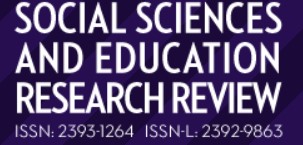MULTICULTURAL ISLAMIC EDUCATION: GUS DUR AND CAK NUR PERSPECTIVES
MULTICULTURAL ISLAMIC EDUCATION: GUS DUR AND CAK NUR PERSPECTIVES
Author(s): Abdul KHOBIR, Khomsatun Rosalina, Fatmawati Nur Hasanah, Dian Rif’iyatiSubject(s): Islam studies, Sociology of Culture, Sociology of Education
Published by: Editura Sitech
Keywords: Indonesia; comparison; Islamic education; multicultural;
Summary/Abstract: Indonesia is a country with various tribes, nations, races, ethnicities, religions, and languages. This diversity is unique for the Indonesian people. Multicultural understanding is needed to be implemented in the life of a pluralistic society. Multicultural understanding that is tolerant, egalitarian, democratic, inclusive, as well as understanding and appreciating diversity is important and urgent to be instilled through multicultural Islamic education. Indonesian Muslim scholar, Gus Dur Wahid and Cak Nur give more attention to multiculturalism education seen from their ideas in various writings. This type of research is library research using a qualitative descriptive-analytical approach. Furthermore, the data were analyzed using technical content analysis. The results of this study indicated that multicultural Islamic education upholds tolerance, democracy, humanism and pluralism. According to Gus Dur, multicultural Islamic education is learning based on local cultural diversity that is synchronized with the teachings of Islam, built on the spirit of equality, equality, humanity, and plurality through mutual respect for existing similarities, differences, and uniqueness. Meanwhile, according to Cak Nur, multicultural Islamic education is education that views that diversity is not a barrier or reason for discrimination against other groups. Then in the thoughts of Gus Dur and Cak Nur, there are similarities that lie in the aspects of multicultural ideas, the objectives of multicultural Islamic education, the concept of educators and learning methods. While the differences are in terms of concepts, curriculum, and implementation of learning evaluation.
Journal: Social Sciences and Education Research Review
- Issue Year: 8/2021
- Issue No: 2
- Page Range: 119-139
- Page Count: 21
- Language: English

